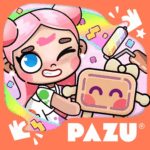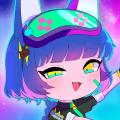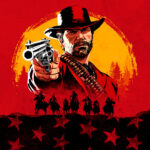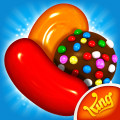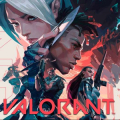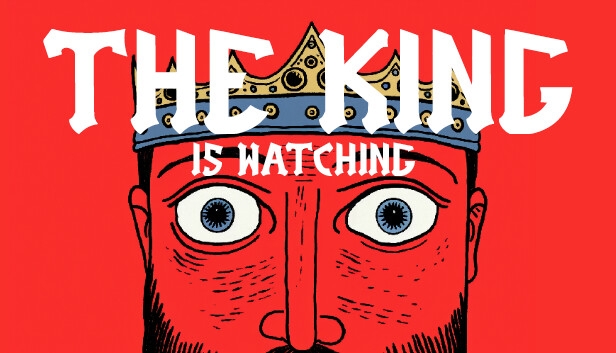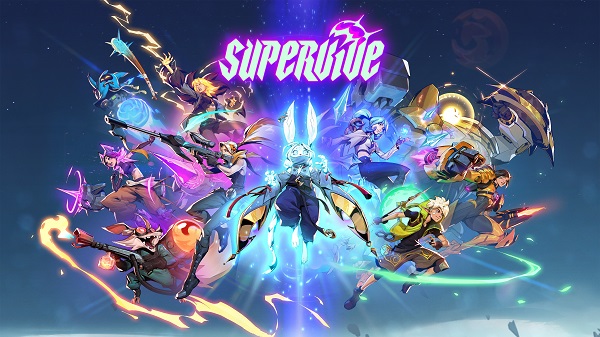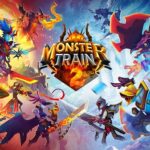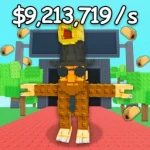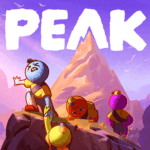Advertisement
Popular Now
Pokémon, developed by Game Freak and published by Nintendo and The Pokémon Company, has become a global cultural phenomenon since its debut in 1996. With its role-playing gameplay centered on capturing, training, and battling fictional creatures called Pokémon, the series has evolved through nine generations, each introducing significant innovations. This article provides an overview of the main Pokémon games across these generations, excluding other franchise titles like Pokémon Go.
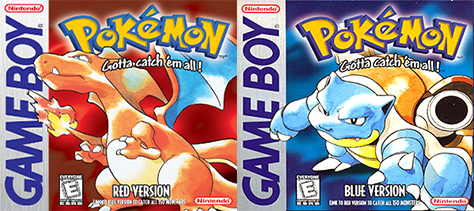
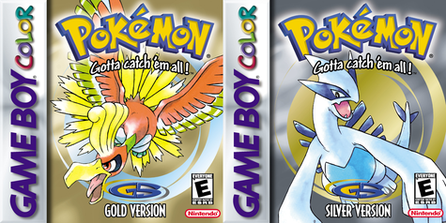

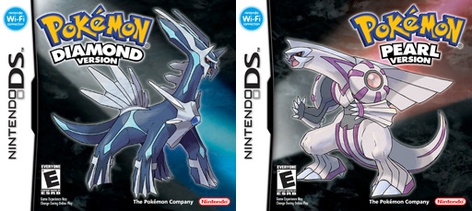
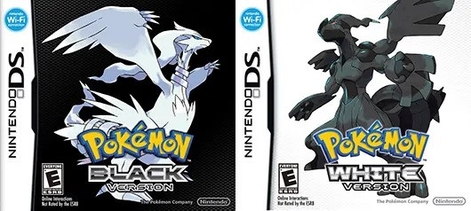

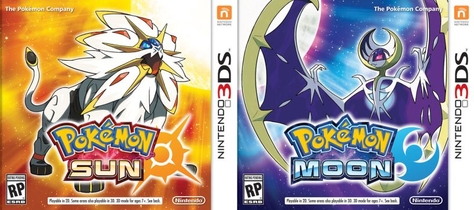
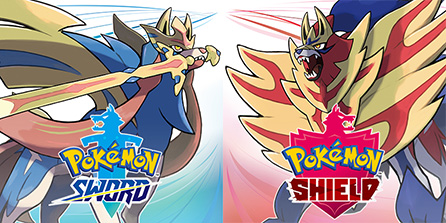
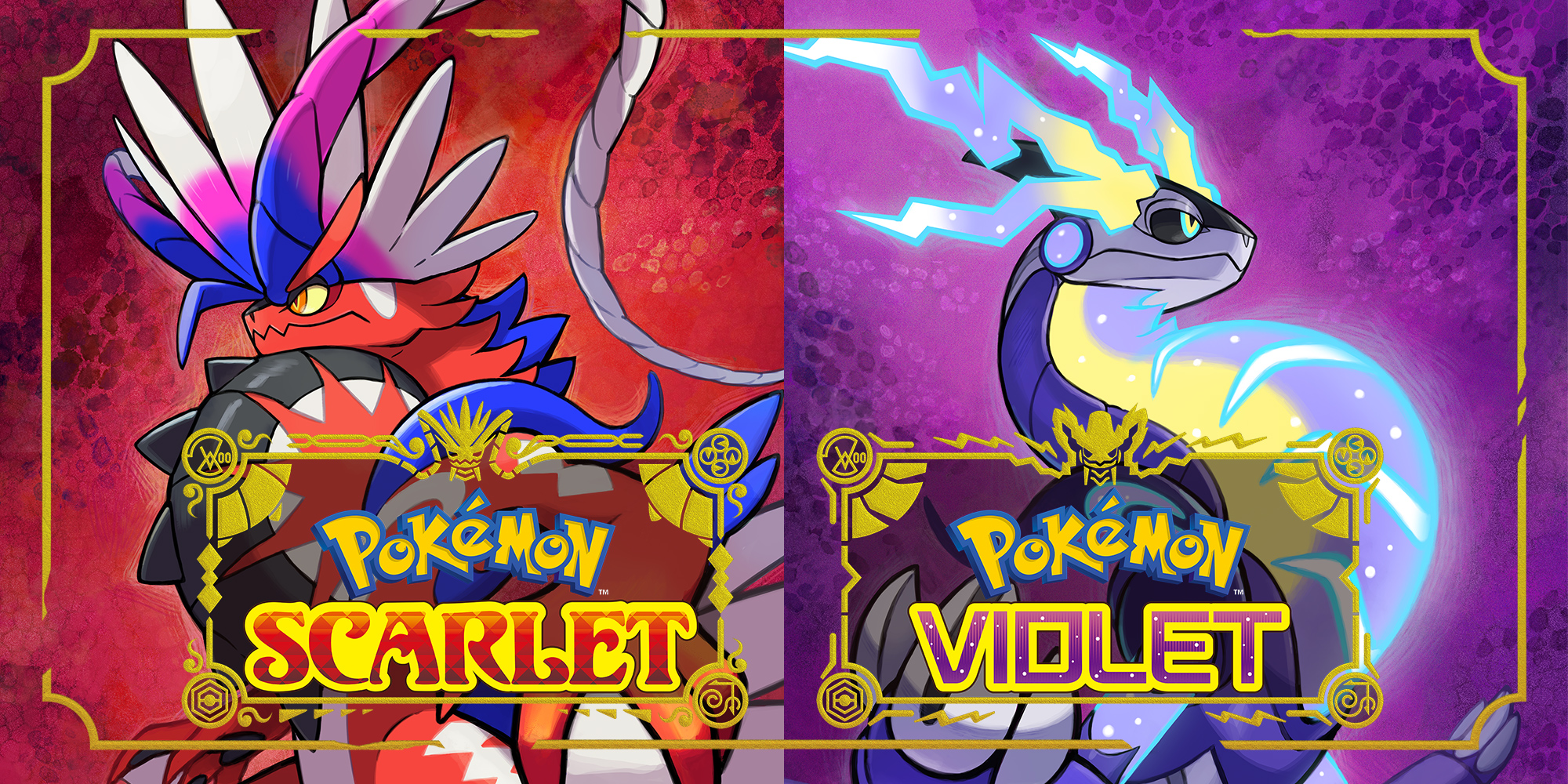
<Picture will be updated soon>
1. Generation I (1996–1999): The Birth of a Legend

- Games Released (Year):
- Pokémon Red and Green (JP: 1996, Japan only)
- Pokémon Red and Blue (NA: 1998, EU/AUS: 1999)
- Pokémon Yellow: Special Pikachu Edition (JP: 1998, NA: 1999, EU: 2000)
- Objective Evaluation: Generation I laid the foundation for Pokémon with simple yet addictive RPG gameplay. Players explore the Kanto region, capture 151 Pokémon, conquer 8 Gyms, and face the Elite Four. Pokémon Yellow is an enhanced version inspired by the anime, featuring Pikachu as a companion.
- Strengths:
- Innovative gameplay encouraging Pokémon collection and trading via Game Boy link cables.
- Simple, accessible story appealing to all ages.
- 151 iconic Pokémon that sparked a cultural phenomenon.
- Weaknesses:
- Monochrome, rudimentary graphics on the Game Boy.
- Numerous technical glitches (e.g., "MissingNo.").
- Unbalanced battle system, with Psychic-type dominating.
- Notable Experience: Trading Pokémon via link cables fostered social interaction. Encountering Mewtwo in Cerulean Cave was a memorable moment.
- Community Reception: Red/Blue triggered a global craze, praised for creativity. Yellow was loved for its anime connection, though some criticized its limited Pokémon variety.
2. Generation II (1999–2002): Expanding the World

- Games Released (Year):
- Pokémon Gold and Silver (JP: 1999, NA: 2000, EU: 2001)
- Pokémon Crystal (JP: 2000, NA: 2001, EU: 2001)
- Objective Evaluation: Generation II introduced the Johto region with 100 new Pokémon, totaling 251. Gameplay was enhanced with a day/night system, Pokémon genders, and two regions (Johto and Kanto). Crystal added a female protagonist and a Suicune-focused storyline.
- Changes from Previous Generation:
- Added Steel and Dark types to balance Psychic.
- Day/night system affecting Pokémon appearances.
- Pokémon could hold items and breed, adding strategic depth.
- Strengths:
- Vibrant color graphics on Game Boy Color.
- Larger scope with two regions to explore.
- Strategic improvements with features like Abilities and Natures (though not fully developed).
- Weaknesses:
- Some new Pokémon (e.g., Unown) criticized for lack of creativity.
- Slow game pace, especially in battles.
- Limited legendary Pokémon events (e.g., Mew).
- Notable Experience: Revisiting Kanto after Johto felt epic. Battling Red on Mt. Silver was a peak challenge.
- Community Reception: Gold/Silver were hailed as a major leap, often considered the series’ peak. Crystal was loved for its female protagonist and Suicune story, though some felt it lacked significant changes from Gold/Silver.
3. Generation III (2002–2006): Revolution on Game Boy Advance

- Games Released (Year):
- Pokémon Ruby and Sapphire (JP: 2002, NA: 2003, EU/AUS: 2003)
- Pokémon Emerald (JP: 2004, NA: 2005, EU: 2005)
- Pokémon FireRed and LeafGreen (JP: 2004, NA: 2004, EU: 2004)
- Objective Evaluation: Generation III introduced the Hoenn region with 135 new Pokémon, moving to the Game Boy Advance. Ruby/Sapphire brought double battles and Abilities. Emerald is a definitive version with Battle Frontier. FireRed/LeafGreen are remakes of Red/Blue with updated graphics.
- Changes from Previous Generation:
- Vivid 2D graphics leveraging Game Boy Advance’s power.
- Added Abilities and Natures, enhancing strategy.
- Removed backward compatibility with Generations I and II, sparking controversy.
- Strengths:
- Diverse Hoenn region with unique environments (volcanoes, oceans).
- Battle Frontier in Emerald offered exceptional post-game content.
- FireRed/LeafGreen revitalized Kanto with modern visuals.
- Weaknesses:
- Lack of backward compatibility prevented Pokémon transfers from older games.
- Ruby/Sapphire’s story criticized as simplistic.
- Overreliance on water-based HMs (e.g., Surf) was inconvenient.
- Notable Experience: Battle Frontier in Emerald provided top-tier strategic challenges. Battling Steven Stone (Emerald) and exploring Sevii Islands (FireRed/LeafGreen) were highlights.
- Community Reception: Ruby/Sapphire faced initial criticism for lacking backward compatibility but grew popular for Hoenn and gameplay. Emerald was highly praised for Battle Frontier. FireRed/LeafGreen were celebrated for reviving Kanto.
4. Generation IV (2006–2010): Transition to Nintendo DS

- Games Released (Year):
- Pokémon Diamond and Pearl (JP: 2006, NA: 2007, EU: 2007, AUS: 2007)
- Pokémon Platinum (JP: 2008, NA: 2009, EU: 2009)
- Pokémon HeartGold and SoulSilver (JP: 2009, NA: 2010, EU: 2010)
- Objective Evaluation: Generation IV brought players to Sinnoh with 107 new Pokémon. Diamond/Pearl introduced online battles via Wi-Fi. Platinum improved story and speed. HeartGold/SoulSilver, remakes of Gold/Silver, are considered among the best Pokémon games.
- Changes from Previous Generation:
- Split moves into Physical/Special, deepening strategy.
- 2.5D graphics blending 2D and 3D on Nintendo DS.
- Wi-Fi connectivity enabled global trading and battling.
- Strengths:
- Sinnoh’s engaging story with mythological elements (Arceus, Creation Trio).
- HeartGold/SoulSilver enhanced Johto with Pokémon following players.
- Online battles ushered in a global competitive era.
- Weaknesses:
- Slow battle speed in Diamond/Pearl frustrated players.
- Some new Pokémon (e.g., Bidoof) were criticized for lack of creativity.
- Heavy HM reliance (e.g., Defog) was cumbersome.
- Notable Experience: Battling Cynthia, Sinnoh’s Champion, was a tough challenge. Pokéathlon in HeartGold/SoulSilver and Distortion World in Platinum offered unique experiences.
- Community Reception: Diamond/Pearl were warmly received for Wi-Fi but criticized for slowness. Platinum was praised for fixes. HeartGold/SoulSilver earned near-perfect reviews.
5. Generation V (2010–2013): Reinventing the Franchise

- Games Released (Year):
- Pokémon Black and White (JP: 2010, NA: 2011, EU: 2011)
- Pokémon Black 2 and White 2 (JP: 2012, NA: 2012, EU: 2012)
- Objective Evaluation: Generation V introduced Unova with 156 new Pokémon, emphasizing deeper storytelling. Black/White added seasons and triple battles. Black 2/White 2, as sequels, expanded with new areas and the Pokémon World Tournament.
- Changes from Previous Generation:
- Used only new Pokémon in the main story, refreshing the experience.
- Complex story tackling moral issues (Team Plasma).
- Added Easy and Challenge modes in Black 2/White 2.
- Strengths:
- Outstanding story focusing on ideals and truth.
- Pokémon World Tournament in Black 2/White 2 allowed battles with iconic characters.
- 2D sprite graphics peaked on the DS.
- Weaknesses:
- Some new Pokémon (e.g., Trubbish) were criticized for lack of creativity.
- Limited use of older Pokémon in Black/White was controversial.
- Few groundbreaking new features compared to Generation IV.
- Notable Experience: Battling Ghetsis and N’s storyline were emotionally impactful. Pokémon Dream World offered a unique online experience.
- Community Reception: Black/White were praised for their story but criticized for excluding older Pokémon. Black 2/White 2 were highly rated for rich content, often seen as among the best.
6. Generation VI (2013–2016): Leap to 3D

- Games Released (Year):
- Pokémon X and Y (JP: 2013, NA: 2013, EU: 2013)
- Pokémon Omega Ruby and Alpha Sapphire (JP: 2014, NA: 2014, EU: 2014)
- Objective Evaluation: Generation VI brought Pokémon to Nintendo 3DS with full 3D graphics. X/Y introduced the Kalos region, Fairy type, and Mega Evolution. Omega Ruby/Alpha Sapphire, remakes of Ruby/Sapphire, included the Delta Episode.
- Changes from Previous Generation:
- Shifted to 3D graphics, enhancing visuals.
- Mega Evolution added new strategic depth.
- Player Search System (PSS) improved online trading.
- Strengths:
- Kalos, inspired by France, offered a vibrant world.
- Mega Evolution refreshed battles and excited players.
- Omega Ruby/Alpha Sapphire revitalized Hoenn with 3D graphics.
- Weaknesses:
- X/Y’s story was simplistic, lacking depth.
- Low difficulty disappointed veteran players.
- Poor 3D performance on older 3DS models.
- Notable Experience: Using Mega Evolution in battle felt epic. The Delta Episode in Omega Ruby/Alpha Sapphire, focusing on Rayquaza, was a highlight.
- Community Reception: X/Y were praised for graphics and Mega Evolution but criticized for a weak story. Omega Ruby/Alpha Sapphire were warmly received for refreshing Hoenn.
7. Generation VII (2016–2019): Bold Experiments

- Games Released (Year):
- Pokémon Sun and Moon (JP: 2016, NA: 2016, EU: 2016)
- Pokémon Ultra Sun and Ultra Moon (JP: 2017, NA: 2017, EU: 2017)
- Pokémon Let’s Go, Pikachu! and Let’s Go, Eevee! (JP: 2018, NA: 2018, EU: 2018)
- Objective Evaluation: Generation VII introduced the Alola region with 81 new Pokémon. Sun/Moon replaced Gyms with Island Trials and introduced Z-Moves. Ultra Sun/Ultra Moon expanded the story. Let’s Go, a Yellow remake on Switch, simplified gameplay.
- Changes from Previous Generation:
- Replaced Gyms with Island Trials, refreshing the formula.
- Z-Moves added powerful, one-use moves.
- Let’s Go simplified gameplay for new players.
- Strengths:
- Alola’s Hawaiian culture brought a fresh feel.
- Sun/Moon’s story, focusing on family, was deep.
- Let’s Go offered beautiful graphics and accessibility on Switch.
- Weaknesses:
- Z-Moves were unbalanced and less impactful long-term.
- Ultra Sun/Ultra Moon were seen as repetitive.
- Let’s Go was too simple, lacking depth for veteran fans.
- Notable Experience: Island Trials offered diverse challenges. Lillie’s storyline in Sun/Moon was emotionally resonant.
- Community Reception: Sun/Moon were praised for innovation, though Island Trials were divisive. Ultra Sun/Ultra Moon were criticized for minimal changes. Let’s Go split fans: newcomers loved it, but veterans found it lacking.
8. Generation VIII (2019–2022): Transition to Console

- Games Released (Year):
- Pokémon Sword and Shield (JP: 2019, NA: 2019, EU: 2019)
- Pokémon Brilliant Diamond and Shining Pearl (JP: 2021, NA: 2021, EU: 2021)
- Pokémon Legends: Arceus (JP: 2022, NA: 2022, EU: 2022)
- Objective Evaluation: Generation VIII brought Pokémon to Nintendo Switch. Sword/Shield introduced the Galar region, Dynamax, and the Wild Area. Brilliant Diamond/Shining Pearl remade Diamond/Pearl. Legends: Arceus offered action-based gameplay and an open-world in Hisui.
- Changes from Previous Generation:
- Wild Area introduced open-world exploration.
- Dynamax scaled up Pokémon for dramatic battles.
- Legends: Arceus revolutionized with real-time Pokémon catching.
- Strengths:
- Galar, inspired by the UK, featured unique cities.
- Legends: Arceus delivered a fresh open-world experience.
- Sword/Shield’s DLC (Isle of Armor, Crown Tundra) expanded content.
- Weaknesses:
- Sword/Shield faced backlash for cutting the National Dex and subpar graphics.
- Brilliant Diamond/Shining Pearl lacked innovation compared to originals.
- Legends: Arceus had rough graphics and sparse world areas.
- Notable Experience: The Wild Area in Sword/Shield offered exploration freedom. Legends: Arceus introduced a new catching mechanic.
- Community Reception: Sword/Shield were controversial due to the National Dex but loved for gameplay. Brilliant Diamond/Shining Pearl were seen as uninspired. Legends: Arceus was praised for innovation.
9. Generation IX (2022–Present): Full Open-World

- Games Released (Year):
- Pokémon Scarlet and Violet (JP: 2022, NA: 2022, EU: 2022)
- Objective Evaluation: Generation IX introduced the Paldea region with a fully open-world. Gameplay allowed free exploration with three storylines (Victory Road, Starfall Street, Path of Legends).
- Changes from Previous Generation:
- Fully open-world, removing linear progression.
- Tera Type allowed Pokémon to temporarily change types.
- Co-op multiplayer enabled shared exploration.
- Strengths:
- Vast, diverse Paldea with numerous activities.
- Emotional story, especially Path of Legends.
- Exploration freedom offered a personalized experience.
- Weaknesses:
- Poor performance and technical glitches.
- Missing features like Battle Frontier.
- Low difficulty lacked challenge.
- Notable Experience: Tera Raids provided cooperative challenges. Exploring Area Zero was a mysterious highlight.
- Community Reception: Scarlet/Violet were praised for their open-world and story but heavily criticized for technical issues. Fans appreciated the freedom.



